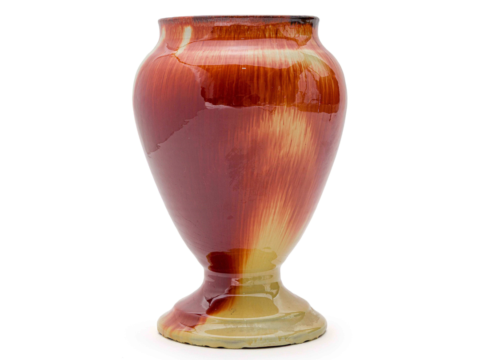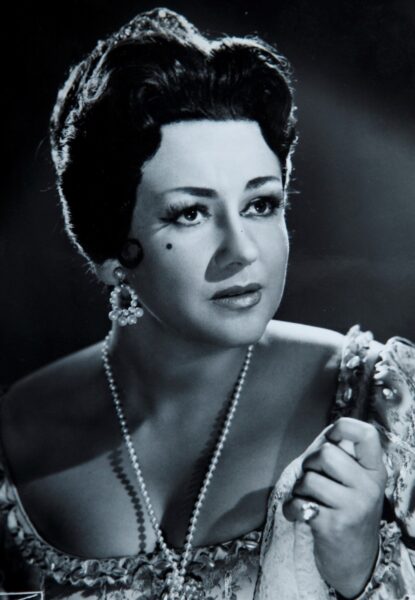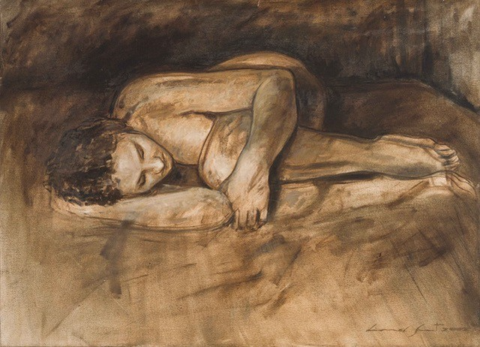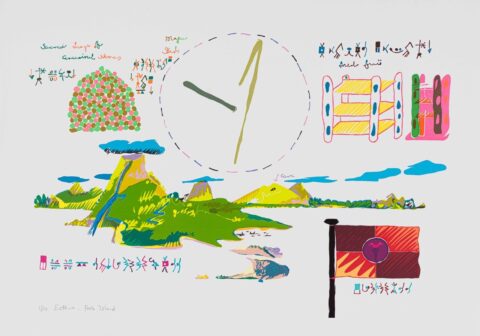BD Art PR Business Day Prime PR
Linn Ware: Celebrating The Ceramics Of Olifantsfontein
The sale features a fantastic array of Linn Ware that celebrates South Africa’s rich ceramic traditions. highlighting a key moment in the country’s artistic development, during a period when industrialisation and mass production were rapidly transforming the design landscape.
The story of Linn Ware begins in the early 20th century in Olifantsfontein, a rural area east of present-day Midrand. In 1908, mining magnate Sir Thomas Cullinan founded Transvaal Potteries to take advantage of the region’s exceptional clay deposits. Although the factory closed in 1915, it laid the groundwork for what would follow. A decade later, artists Gladys Short and Marjorie Johnstone, both trained at the Durban Technical College, took over the site and established The Ceramic Studio in 1925.
By 1943, the studio had evolved into what became known as Linn Ware, forming a new identity and a shift toward more distinctive ceramic work, a feat of artistic innovation with an ethos that promoted the value of handcraft, simplicity and integrity in design.
One of Linn Ware’s defining qualities is its rich, layered glaze, achieved through a meticulous double-glazing process, involving a technique where the ceramics are coated in a white slip followed by the application of cobalt, copper, manganese, and iron oxides, which resulted in rich and varied hues—luminous surfaces in blue, green, jade, lilac, rhubarb, russet and pale grey.
The sale includes a large jardinière-on-stand in blue and green glaze, achieved using copper oxide in a transparent glaze (estimate R20 000 – R25 000). Also included is a green-glazed bulbous vase with relief patterns (estimate R10 000 – R12 000). This piece has the iconic emerald green and turquoise colour palette, achieved using copper oxide in a transparent glaze, which, together with the signature innovation of double glazing, results in the rich, depth-enhancing finishes and the luminosity. The subtle detailing suggests the hand of a talented ceramicist, which sets it apart from standard tableware.
Other highlights include a floral-patterned jar and cover (estimate R6 000 – R8 000), hand-painted and signed to showcase the skill of individual artists working at the Ceramic Studio at the time. The sale also features a mauve-glazed vase with folded sides (estimate R2 000 – R2 500). Although the deep turquoise glaze was Linn Ware’s trademark colour, the pottery also produced other hues such as this pale mauve, created using a mix of manganese, cobalt, and iron oxides. Another highlight is a cream-glazed two-handled urn-shaped pedestal vase (estimate R5 000 – R7 000), showcasing the off-white palette characteristic of feldspathic glaze, which produced a slightly translucent appearance. Several Linn Ware items feature pedestal forms, which required a careful balance of structure, proportion, and design.
Please visit www.straussart.co.za for more information, to register to bid and to participate in the sale.
Linn Ware: Celebrating the Ceramics of Olifantsfontein
Linn Ware | The History
The story of Linn Ware begins with the rich clay deposits found in Olifantsfontein, which inspired Sir Thomas Cullinan, mining magnate and namesake of the world’s largest diamond, to establish a ceramic enterprise. Around 1907, he sent his son, Rowland Vivian Cullinan, to Stoke-on-Trent in England to study pottery techniques and commissioned English potter Harold Emery to assist with setting up the venture. Emery was tasked with planning the operation, sourcing equipment, and recruiting skilled potters from England.
This effort led to the founding of ‘Transvaal Potteries’, which operated in Olifantsfontein from 1907 to 1914. During this period, Emery worked alongside roughly thirty potters, housed in a purpose-designed factory and a “potters’ village”, producing ceramics in the English tradition. By 1914, ‘Transvaal Potteries’ closed, partly due to financial difficulties and the discontent of the English potters, many of whom struggled to adjust to life in South Africa. By the time the war broke out, the British potters returned home, and the workshops, kilns, and potters’ cottages at Olifantsfontein were left abandoned.
Around a similar time, British ceramicist John Adams arrived in South Africa to head the art department at Durban Technical College. There, he established a pottery school that would become important in shaping South Africa’s studio ceramics movement. Among his students were Audrey Frank, Marjorie Johnstone, Joan Methely, Thelma Newlands, and Gladys Short—several of whom would go on to play a central role in the next chapter of Olifantsfontein’s ceramic history.
In 1925, recognising the talent and potential of this new generation, Sir Thomas Cullinan invited Gladys Short and Marjorie Johnstone, both graduates of the Durban School of Art, to establish a new ceramic studio at the now-abandoned Olifantsfontein site. Joined later by Thelma Gifford-Gayton, a graduate of London’s Royal College of Art, they founded what would become known as the ‘Ceramic Studio’.
Initially focused on domestic pottery, the studio gained recognition and was commissioned to produce decorative tiles and architectural sculptures for architects and designers. Their work made a lasting impact on the development of South African ceramics.
With the outbreak of WWII, the studio lost staff to the war effort, and imported glazes and pigments became scarce and the Ceramic Studio was faced with closure.
But in 1943, the Cullinan family acquired the ‘Ceramic Studio’ under the name of Linn Ware, with the name “Linn” derived from “Cullinan”. The earthenware produced included beautifully proportioned tableware, vases and jardinière, characterised by a unique double-glazing process. This method involved applying and firing two layers of glaze, which created a rich surface texture and colour gradations—features that gave Linn Ware its tactile and sensual quality.
Linn Ware’s legacy endures, reflecting a creative endeavour in opposition to mass production, while creating a uniquely local form.
Fact Sheet
- The Ceramic Studio created both decorative architectural tiles and domestic pottery, the latter known as Linn Ware, which is now highly collectable.
- Decorative tiles, commissioned by architects and designers, were produced in Olifantsfontein as early as 1925, continuing a three-decade-long tradition of the craft. The Ceramic Studio, which produced the tiles, was established by pioneering female ceramic artists, among them Gladys Short, Marjorie Johnstone and Thelma Gifford-Gayton. Their tiles can still be seen in public buildings in the Cape, including on the exterior of older suburban post offices in Cape Town and inside Groote Schuur Hospital, they decorate the main passageway.
- Linn Ware remains admired for its artistic and historical value, reflecting a unique period in South African ceramic art.
- Linn Ware is rare as it has not been made for over forty-five years.
- Olifantsfontein is a remote industrial settlement south of Pretoria, at which Thomas Cullinan had established a brick and pipe works some two decades earlier.
The Timeline | The Origins of Linn Ware in South Africa
1907
Sir Thomas Cullinan initiates a ceramics venture by sending his son, Rowland Vivian Cullinan, to study pottery in Stoke-on-Trent, England. He appoints Harold Emery to oversee planning, equipment procurement and the recruitment of skilled English potters.
1907–1914
Transvaal Potteries operates in Olifantsfontein, employing around thirty English potters. The work produced follows traditional English pottery techniques and styles.
1914
Transvaal Potteries closes due to financial strain and the English potters’ dissatisfaction with life in South Africa. That same year, John Adams, an English potter, arrives in South Africa to lead the art department at Durban Technical College. He establishes a pottery school, training future pioneers of South African ceramics.
1925
Following their training under John Adams, Gladys Short and Marjorie Johnstone—joined later by Thelma Gifford-Gayton—are invited by Sir Thomas Cullinan to found a new ceramic studio at the abandoned Olifantsfontein site, birthing what would become Linn Ware.
1920s–1930s
The studio initially focused on domestic pottery but soon expanded to produce decorative tiles and architectural sculptures commissioned by architects and designers.
1943
The studio’s work became known as Linn Ware, named in part after Cullinan, and distinguished by its hand-thrown techniques and innovative double-glazing, which gave the ceramics their signature luminous surface and rich colour variations.






 Sign-up and receive the Business Media MAGS newsletter OR SA Mining newsletter straight to your inbox.
Sign-up and receive the Business Media MAGS newsletter OR SA Mining newsletter straight to your inbox.